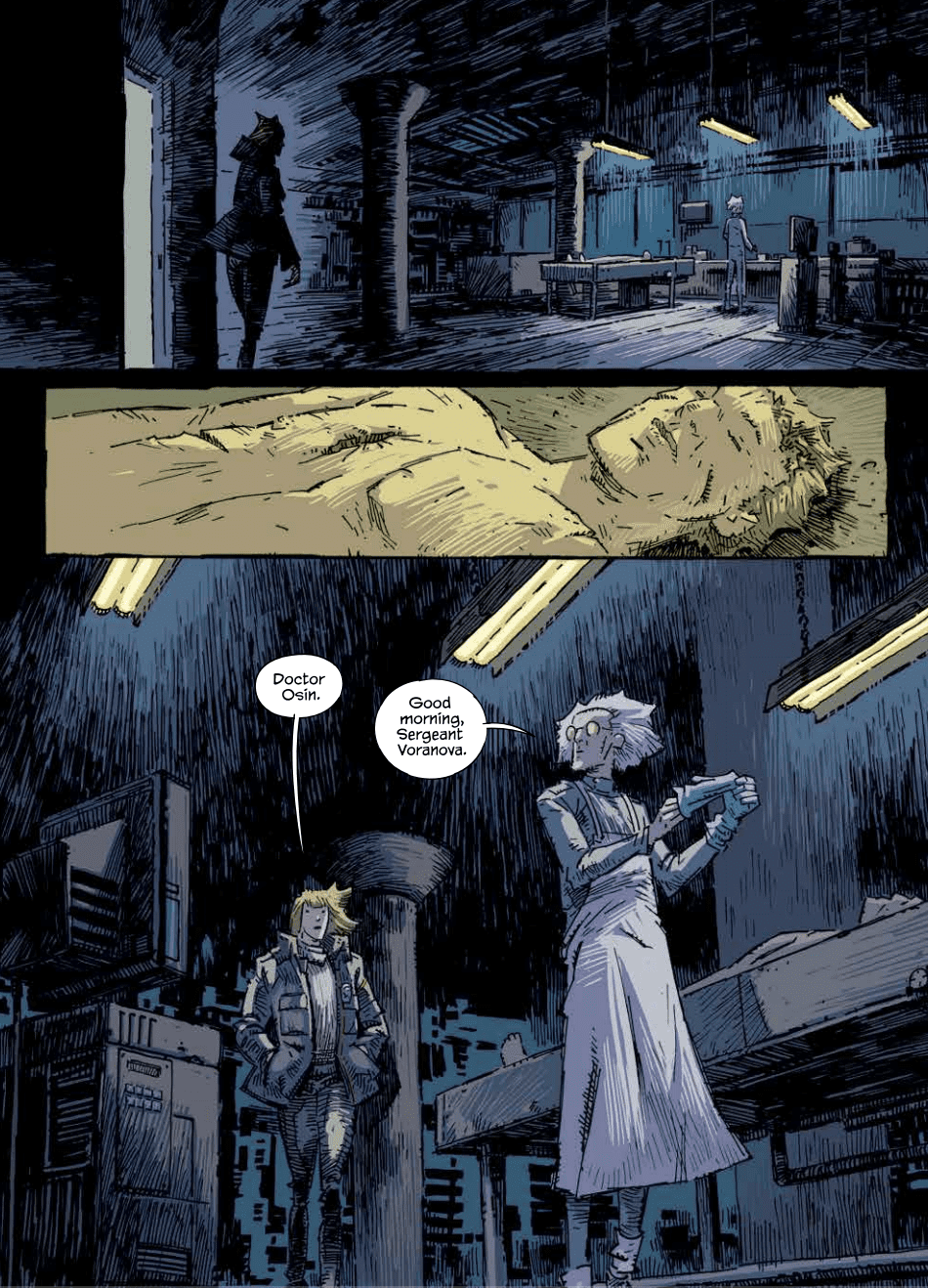Warren Ellis and Jason Howard’s Trees: Three Fates #2 is a tightly constructed supernatural murder mystery whose focused story and rough-hatched art style succeed wildly. Ellis’s script is sharp, dropping tons of hints and red herrings to what exactly the story will entail, and Howard’s art and Dee Cunniffe’s colors are concise and detailed where it needs to be while still offering room for interpretation and emotion. Fonographiks isn’t given a lot of space to flex their lettering muscles, but the story succeeds because of their clean and precise typography. It’s difficult to pick out flaws (if there are any) in Trees: Three Fates #2 because it is such a well-crafted story.
Picking up after the discussion with Nina Pankov, the most influential person in the town of Toska, Trees: Three Fates #2 begins with Klara riding down to Doctor Osin’s – the local coroner – as she conducts an autopsy on the unidentified dead guy whose death began this story.
If there is one takeaway from this chapter it is that Warren Ellis knows how to make a setting feel authentic and interesting. There is something so unmistakably Twin Peaks-ian about that the town of Toska that it is almost unsettling. Perhaps it is the random witches running up to citizens ranting about how the old ways were better as a substitute for the log lady (R.I.P) speaking for her log that sets the alarm blaring, but it is a welcome asset regardless.
MFR ON YOUTUBE (latest video)
Help us reach 5K Subs!
I think it has more to do with the small town locale where everyone has their allotted job that they are identified with. Dr. Osin is the coroner, Pankov is the railyard boss, and Klara is the cop. This small town aesthetic harkens back to a more simplistic time which also seems to be a theme Ellis toys with in this story, especially in this chapter: The past vs. The present.
The first instance is the previously mentioned witch doctor, Oro, who shouts to Klara (and the Reader), “Old ways are the Best.” The most prescient instance was most likely when Sasha reappeared to Klara. The resurrection of someone long been dead is a direct representation of the past vs. the present, but the ensuing flashback detailing Klara and Sasha’s first encounter is also a representation of this. In this flashback, they are clearly having a good time together and liking the other person, but the last time they spoke Sasha was midst leaving Klara for good. Not only that, but the topic of conversation that cements Klara’s attraction is Sasha’s ruminations on Sartre regarding ending despair. The story is still in its early stages so these factoids could either be hints or red herrings, but either way Ellis uses them masterfully.

Jason Howard’s art is equally sensational. Howard’s art thrives in the solitude and uses the dark unoccupied spaces of Toska perfectly. Dee Cunniffe’s gray neutral colors emphasize the solitary nature of the town. The way the shadows encroach the autopsy table as Klara and Osin talk adds detail to Osin’s character especially as they talk about their experiences in Moscow.
One scene that stuck out particularly was in the flashback when Sasha begins talking about Sartre and his book idea. The deconstruction of panels and the swirling in the background makes his speech seem incredibly deep, almost prophetic. The way the background transitions from the abstract to sci-fi as Sasha’s idea switches from theory to practice was also a clever switch. And then having the scene ends with a blank background and shadow outlines of Sasha and Klara showed how infatuated with each other they once were. They are literally the only people in the room. This scene is just textbook deconstruction and it could not have been executed better.
Warren Ellis and Jason Howard’s small-town supernatural murder mystery Trees: Three Fates #2 is stellar. It sets up a town rich with nuance and fascinating characters while introducing clues and red herrings towards the series (possibly) sci-fi endgame.

